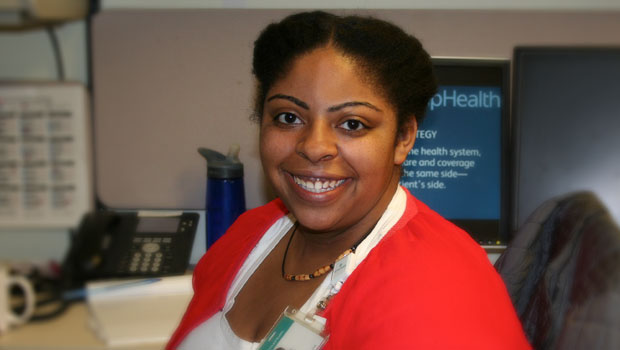PrEP can prevent HIV/AIDS—if we get it to the right people

We have a way to limit the spread of AIDS. We just need to reach people at high risk of HIV infection. GHRI researcher Dr. Leah Adams explains.
by Leah Adams, PhD, women’s health and aging post-doctoral fellow at Group Health Research Institute
Each year, nearly 50,000 people receive a new diagnosis of HIV/AIDS in the United States. It’s true that HIV/AIDS is no longer the “death sentence” that it used to be. With the help of antiretroviral medication, people living with HIV/AIDS can, and often do, lead full, long lives. Still, living with the disease does come with a range of challenges, and the continued spread of HIV shows that we need to do a better job when it comes to prevention.
If you could prevent HIV by taking one pill every day, would you do it?
That’s not a trick question. Rigorous research trials here and in other countries have shown a way to reduce the risk of contracting HIV by up to 92 percent! The studies were conducted among adults who are HIV negative taking Truvada daily. Truvada (generic name: tenofovir disoproxil/emtricitabine) is an antiretroviral drug used to treat HIV. The practice of taking an antiretroviral drug to prevent HIV infection is known aspre-exposure prophylaxis, or PrEP.
In 2012, the U.S. Food and Drug Administration (FDA) approved the use of Truvada for PrEP. In 2014, the U.S. Public Health Service and the Centers for Disease Control and Prevention (CDC) released detailed clinical practice guidelines for PrEP. In the guidelines, PrEP is recommended as one prevention strategy for individuals with risk factors that place them at high risk of contracting HIV/AIDS. When it comes to high-risk groups for HIV, we often think of men who have sex with men (MSM) first. But other groups like some heterosexual adults (for example, people who are HIV negative but have an HIV-positive partner or who have multiple partners but use condoms inconsistently) and people who inject drugs are often at elevated risk for HIV, too. That’s why the CDC guidelines include each of these groups when recommending PrEP.
Because PrEP is a new prevention strategy, we wanted to learn more about HIV-care providers’ views and attitudes about it. We collaborated with the American Academy of HIV Medicine to survey 363 providers across the country. Our findings suggested that although many HIV-care providers hold positive beliefs about the effectiveness of PrEP, they have concerns about the practical aspects of managing patients on PrEP. The providers varied in how likely they would be to prescribe PrEP to different patient groups. Important factors in their decisions about prescribing PrEP included cost, whether the patient would take the pill every day, and how they would follow up with the patient.
Who gets PrEP and who should get it?
Providers were much more likely to consider PrEP for MSM patients than for high-risk heterosexuals or people who inject drugs, even though all of these groups are named in the practice guideline recommendations. PrEP is certainly important for MSM since they are most affected by HIV. But we also must ensure that others at risk for HIV have access to PrEP. The drug is an exciting innovation for HIV prevention. Patients and providers should know about it. If you believe that you could benefit from PrEP, start the conversation with your health care provider!
I’m looking forward to continued work to better understand providers’ and patients’ perceptions and barriers about PrEP. I’m currently involved in a study to learn about providers’ practices in prescribing PrEP. The results will help doctors apply the PrEP guidelines. This fall, I’m moving to a faculty position at George Mason University, but I’ll stay in touch and continue to collaborate with my GHRI colleagues.
Here’s more about our work (see page 19). My coauthors are Ben Balderson, PhD, GHRI research associate; Sheryl Catz, PhD, former GHRI associate investigator now at University of California, Davis; Kathy Brown, MD, Group Health HIV/PrEP Program Medical Director; and Bruce Packett, American Academy of HIV Medicine. Ben and I also have a paper coming soon in AIDS Care.
study researcher
Ben Balderson, PhD
Senior Collaborative Scientist
Kaiser Permanente Washington Health Research Institute


